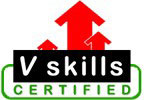Course Outline
Introduction
- Explaining the evolution of MongoDB: Understand the history and development of MongoDB as a NoSQL database.
- Illustrating the need for document-oriented databases: Learn why document-based storage is preferred over relational databases in modern applications.
Components
- Describing documents, collections, and shell in MongoDB: Explore MongoDB’s fundamental structures and its interactive shell for database management.
- Detailing the various data types of MongoDB: Learn about different data types, including strings, numbers, arrays, and embedded documents.
Installation
- Illustrating the requirements for installation: Understand the system prerequisites and dependencies required to install MongoDB.
- Describing the installation of MongoDB: Step-by-step guide to installing and setting up MongoDB on various operating systems.
Data Management
- Describing the creation, deletion, and update of documents: Learn CRUD (Create, Read, Update, Delete) operations in MongoDB.
- Illustrating the techniques for data querying and indexing: Understand how to efficiently retrieve data using queries and indexes.
- Detailing the usage of mapreduce and aggregation: Learn how to perform complex data analysis and transformation using aggregation pipelines.
- Explaining the utility of DBRef, db.eval, GridFS, and capped collections in MongoDB: Explore advanced features such as database references, evaluation functions, file storage, and fixed-size collections.
Administering
- Explaining the execution and halting of MongoDB’s instance: Learn how to start, stop, and manage MongoDB processes.
- Describing the usage of admin interface and serverStatus: Understand MongoDB’s built-in administrative tools and status monitoring.
- Illustrating the techniques for implementing security: Learn best practices for securing MongoDB databases, including authentication and authorization.
- Detailing data backup, replication, and repair in MongoDB: Explore strategies for data redundancy, backup, and disaster recovery.
Sharding
- Detailing the process of autosharding and concept of shard keys: Understand how MongoDB distributes large datasets across multiple servers for scalability.
- Describing configuration and administration of sharding in MongoDB: Learn how to configure, manage, and optimize sharded clusters for high availability.
Apply for Certification
https://www.vskills.in/certification/mongodb-server-administrator